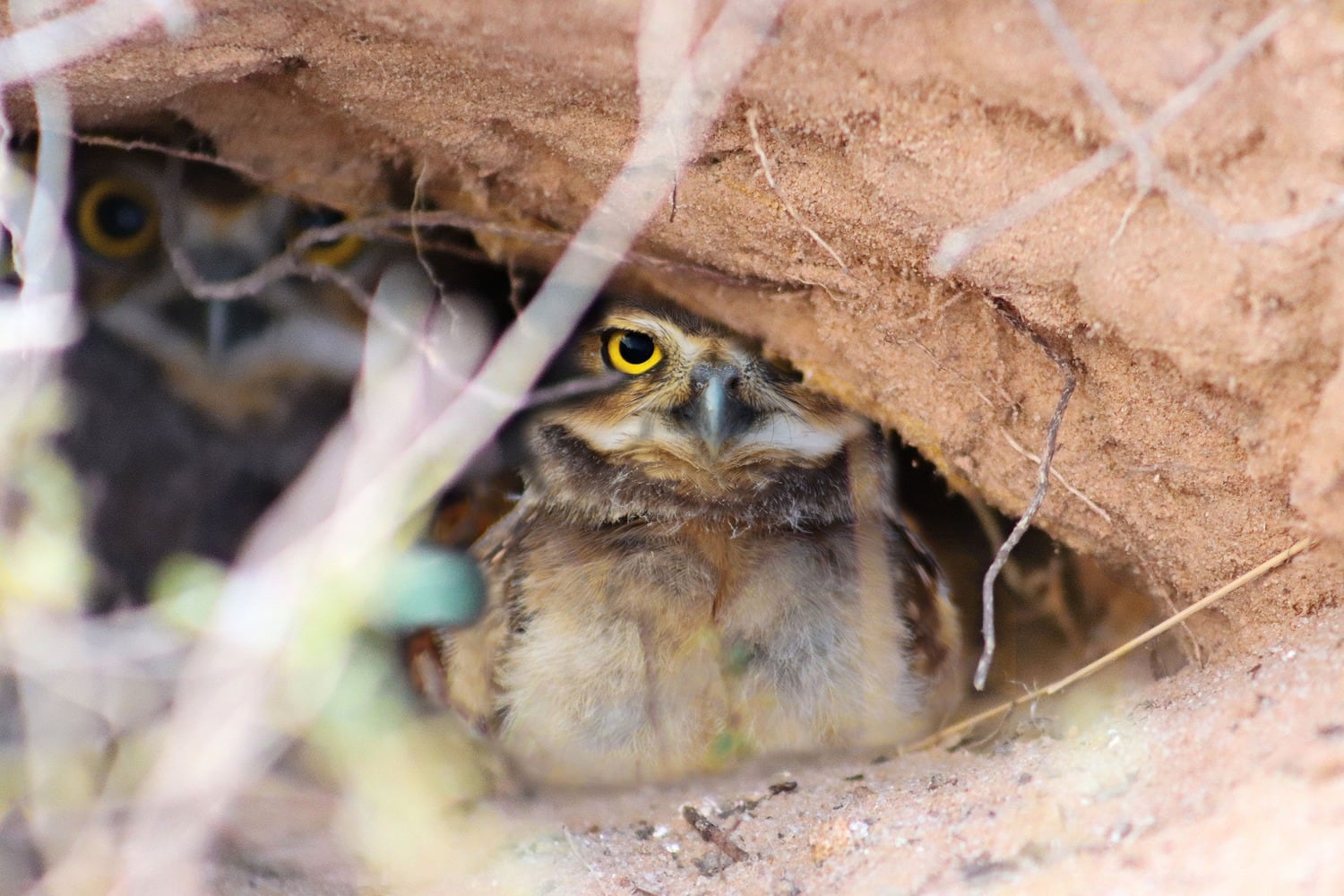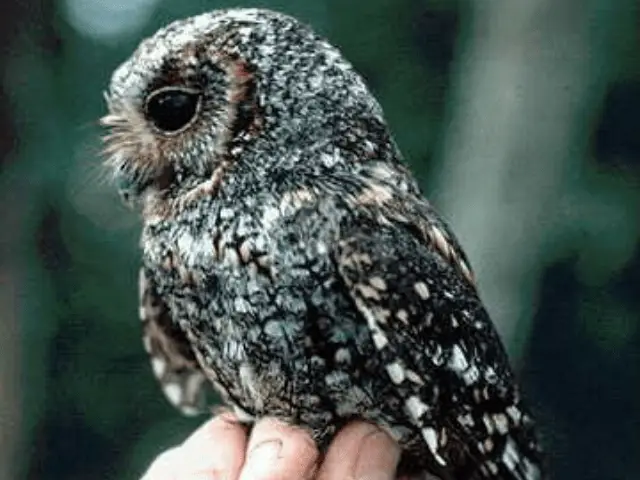Texas is home to eleven precious owls. Many of which are in abundance in the state.
And...
The Piney Woods and the East forested areas house a handful of these owl species in Texas.
To the sandy dunes of the West, you’d find some extra special owls rarely seen elsewhere in the state.
In the North, resident owls abound along with some species migrating from Canada and northern US states. Down South, the lone star state prides itself with national parks where you can go find several of them.
Let’s go find where each of them can be sighted, most likely!
11 Types of Owls Found in Texas
1. Great Horned Owl

Measurements
- Length: 18.1 to 24.8 inches
- Wingspan: 39.8 to 57.1 inches
- Weight: 910 to 2050 grams
The great horned owl is the largest owl of the lone star state. It's the kind of owl that will alarm you if you saw one in the middle of the night with no idea about these avian predators.
Evident from the presence of great horned owls in a residential area like Lake Shore Drive, Waco, they are all over Texas. And as permanent residents to the state, they are around all the time and can be considered one of the species of owls native to Texas.
Great horned owls don't have horns like cattle but two fairly large feathers (ear tufts) on the top of their head. They mostly have a grayish-brown plumage that serves as cover in roost trees.
Tiger owls, as they are sometimes called, inhabit coniferous and deciduous forests, swamps, and even deserts. But they seem to prefer canyons, hills, and watercourses, which are all abundant in Texas.
Perhaps one thing that gives away great horned owls - if you're looking - is their famed stuttering hoot. It sounds like a dove's coo, but way deeper and unmistakable if you listen carefully.
This hoot also called "The Sound of Owls," is mellow but carries volume and travels miles.
FYI: Owls of different species have their unique hooting sounds. Research why do owls hoot to find out more about this peculiar quality.
2. Barn Owl
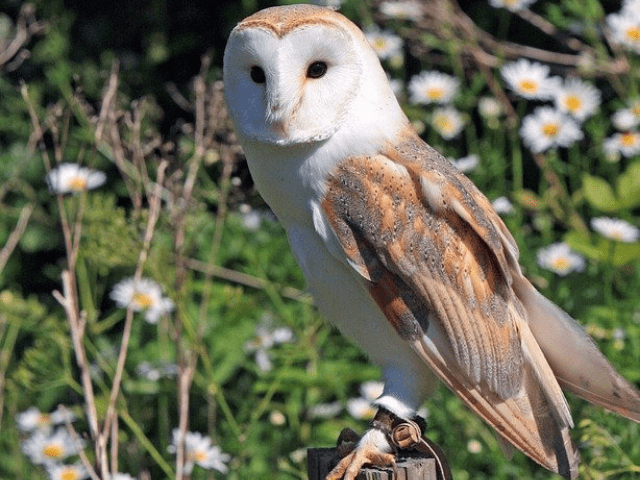
Measurements
- Length:12.6 to 15.8 inches
- Wingspan: 39.4 to 49.2 inches
- Weight: 400 to 700 grams
The barn owl is one of the owls native to Texas, which is plentiful. The only places where they are scarce are in the forested areas of East Texas.
Also, barn owls prefer living at low elevations, so they are rare in the Trans-Pecos region, despite being locals there.
Barn owls, unlike great horned owls, are strictly nocturnal. However, you may spot one during the day if it was disturbed at its roost site.
Barn owls are probably the only white owls in Texas (considering their appearance). The real ones, snowy owls, are rarely ever seen and were last spotted in Odessa, Texas in 2018 - a lucky irruptive year for the state.
As their name implies, barn owls are known to take up residence in abandoned structures like barns, silos, and caves. It's also a form of cohabitation for them.
Barn owls stay in agricultural fields, grasslands, and prairies because the open fields make hunting rodents easy for them. Farmers and ranchers alike love them for it.
Except for the earlier mentioned locations, Texas is the perfect location for barn owls. The state offers a large expanse of vineyards, enormous farmlands, and ranches across the state that provide enough food for the owl.
3. Western Screech Owl
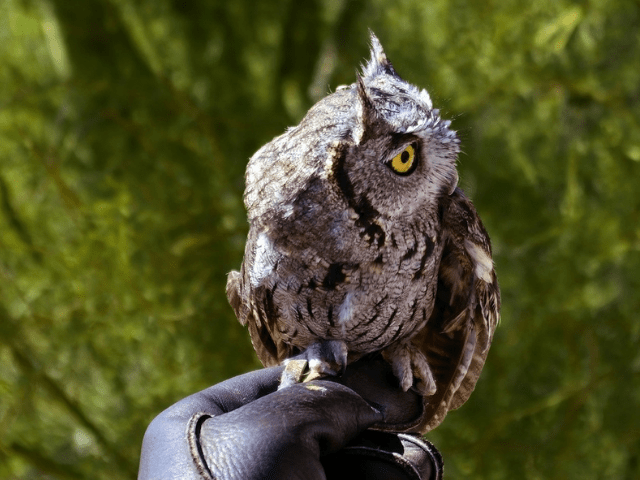
Measurements
- Length: 7.5 to 9.8 inches
- Wingspan: 21.6 to 24.4 inches
- Weight: 100 to 305 grams
Unlike barn owls, western screech owls inhabit dense riparian forests of the west. Nonetheless, they also inhabit desert areas of the west, where they find a home inside holes dug in cactus plants.
Subsequently, their breeding range covers most of West Texas, sprawling into Uvalde and Kinney counties. The Big Bend National Park is a favorite location to find these owls.
Along with their cousins, eastern screech owls, they also live in cities and suburbs in Texas with matured trees to roost in.
If you were staring right at one with its head out its entrance, you still might not see it.
Like with most owls, the best way to spot these owls is to listen for their call. The hoot sounds like a bouncing ball if you listen closely.
4. Eastern Screech Owl
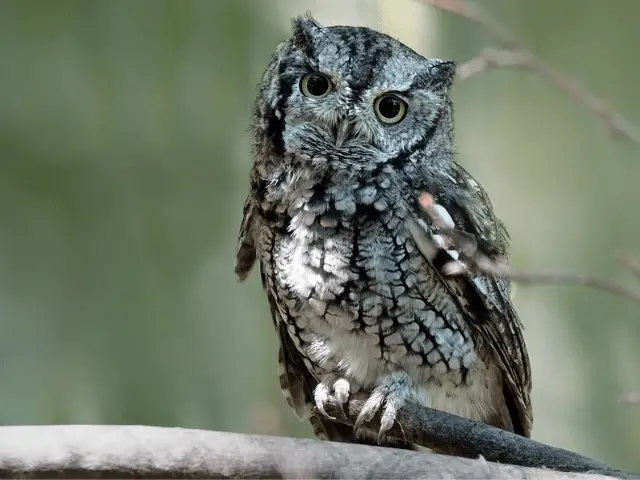
Measurements
- Length: 6.3 to 9.8 inches
- Wingspan: 18.9 to 24 inches
- Weight: 121 to 244 grams
The familiarity between the two screech owls of Texas is only in appearance and knack for camouflage.
While eastern screech owls are a paler gray than their western cousins, they can still be hard to distinguish by sight alone. However, you can be sure a screech owl is eastern if it has a red morph.
Screech owls are familiar all-year residents to most of Texas. In fact, Texas Parks and Wildlife considers it abundant throughout the entire eastern half of the US.
Yet the only way you're likely to notice these owls - and the easiest way to tell them apart from western screech owls - is to learn their call. The trill ventriloquist - sounds like it's far away - the song is unmistakable.
5. Flammulated Owl
Measurements
- Length: 5.9 to 6.7 inches
- Wingspan: 15.9 16.1 inches
- Weight: 43 to 63 grams
The flammulated owl is what you can call "pint-sized for an owl. It's one of the smallest owls in Texas. In my opinion, it looks like a miniature barred owl.
Flammulated owls are summer residents of Texas, staying in the evergreen forests of its mountain ranges. If you were wondering, these include Chisos, Davis, and Guadalupe Mountains in the west.
Flammulated owls mostly occupy the woodlands with douglas fir or oak trees.
They've been seen erratically across the state, from El Paso, Lubbock, Midland, and Valverde counties being highly migratory owls.
Because flammulated owls feed mainly on insects, most migrate south into Mexico in winter when food becomes scarce.
While their unusually large windpipe gives them a deep hoot, the sound doesn't travel far.
If you're searching for flammulated owls, you better have a good listening ear and flashlight.
6. Ferruginous Pygmy-Owl
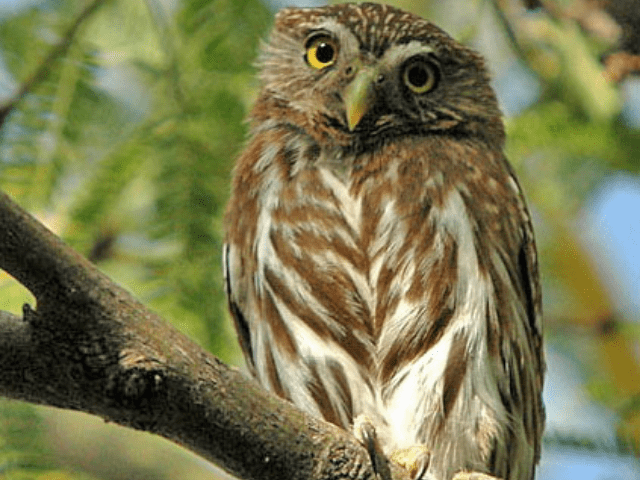
Measurements
- Length: 5.9 inches
- Wingspan: N/A
- Weight: N/A
Once upon a time in the 20th century, ferruginous pygmy owls were common small owls in the southern part of Texas.
Today, ferruginous pygmy owls are considered extremely rare in Texas. Nonetheless, a reasonable population remains in Kennedy and Brooks counties. Although uncertain, a small population might be breeding in Cameron, Starr, Hidalgo, and Willacy counties.
Ferruginous pygmy owls, unlike owls their size, are ferocious hunters, preying on birds, reptiles, small mammals, and insects.
7. Elf Owl
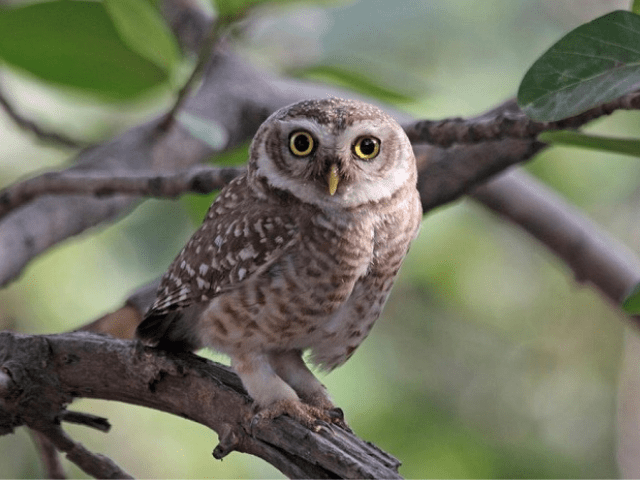
Measurements
- Length: 4.9 to 5.7 inches
- Wingspan: 10.5 owls
- Weight: 40 grams
The range of elf owls covers much of the Chihuahuan Desert in West Texas. They can be found inside the arid Big Bend and Trans-Pecos area, where they breed yearly.
In the desert, they depend on Ladder-backed woodpeckers for nesting and roost holes.
Since trees are scarce and heavily competed for, they occupy yucca stalk, saguaro cactus, fence posts, and power lines. Even power lines are getting less in the desert due to the installment of electric lines underground.
Elf owls feed mainly on insects like scorpions and grasshoppers. However, they hunt lizards and mice when the opportunity presents itself.
In the winter months, they move down to Mexico, where they nest and raise their owlets.
8. Burrowing Owl
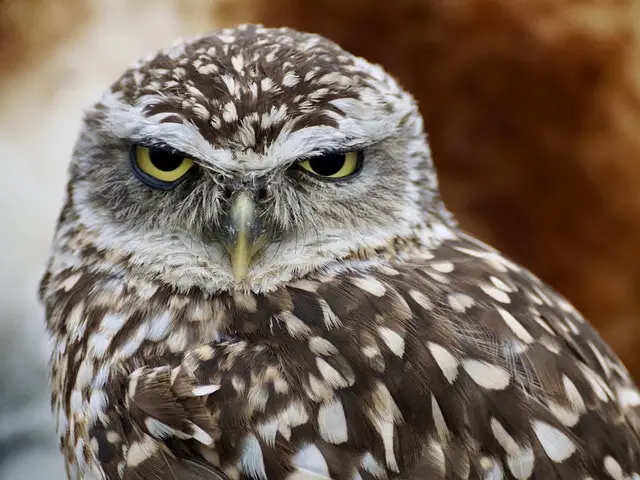
Measurements
- Length: 7.8 to 9.8 inches
- Wingspan: 21.6 inches
- Weight: 150 grams
This is the last of the small owls in Texas we'd touch on!
For comparison, burrowing owls are slightly smaller than western screech owls and about the size of starlings.
Unlike any other owl, burrowing owls live underground in burrows mostly dug by prairie dogs. As a result, their habitat is primarily open fields, prairies, grasslands, and airports too.
West Texas is also a winter hub for migrating burrowing owls from as far north as Canada. Astonishingly, they visit the same burrows from previous winters by making beelines - traveling in a straight line.
Burrowing owls are my favorite owls. Their gangly legs and bald head, and glassy eyes are unlike what most owls look like.
Before we go to the next, let me ask… Have you heard about the real white owls in Texas? They’re the Snowy Owl I mentioned earlier, also called the Arctic owl which is considered an unusual occurrence in West Texas.
9. Barred Owl
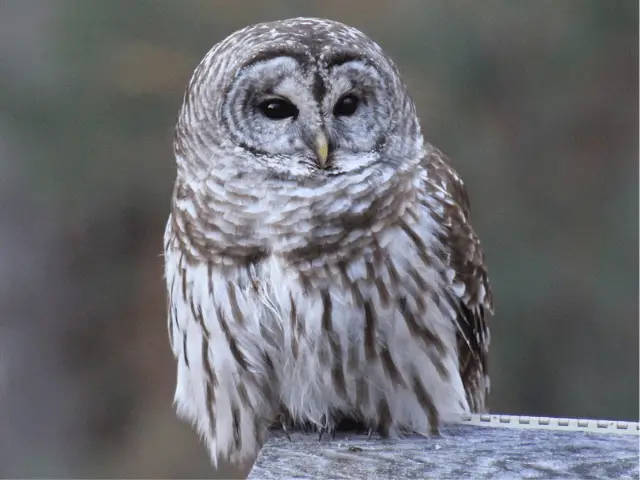
Measurements
- Length: 16.9 to 19.7 inches
- Wingspan: 39 to 43.3 inches
- Weight: 470 to 1050 grams
The barred owl, barred with streaks of brown and white feathers, is one of the largest owls in Texas.
Also called the Hoot Owl, these owls are year-round residents in Texas. They are common to the Pineywoods, Blackland Prairies, Post Oak Savannah, and Coastal Prairies of eastern Texas.
Basically, barred owls prefer a habitat with matured trees like bottomland forests, marshes, swamps, and old-growth forests.
Regardless, it won't be a surprise if you find the barred owl in the bustling cities of Austin and San Antonio, Texas.
Of all the sounds attributed to these owls, they are well known for their "Who cooks for you?" call. These owls have the most unique of Texas owl sounds.
In the video, they look like old witches in oversized cloaks when they hoot. Compared to the sound in this video, they are loud!
FYI: The Barred Owl is one of the popular owls in Florida. Read about them to learn more!
10. Long-Eared Owl
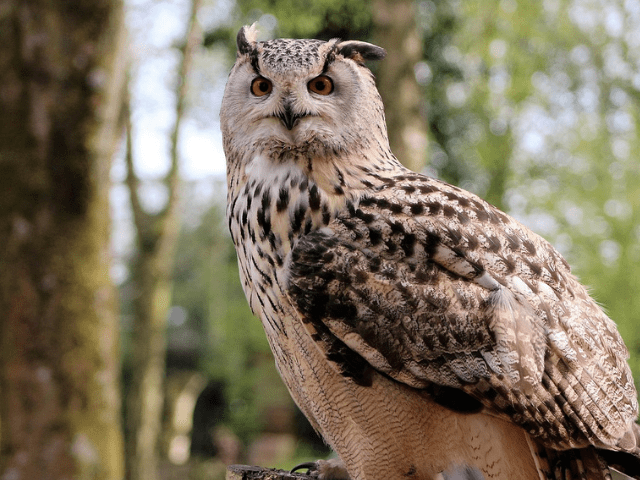
Measurements
- Length: 13.8 to 15.8 inches
- Wingspan: 35.4 to 39.4 inches
- Weight: 220 to 435 grams
Long-eared owls are social birds, unlike most owls who are solitary unless mating. Often, they'd roost in groups of two to twenty owls, especially during winter.
That said, long-eared are typically birds of the west, but small colonies can be seen in North Texas. Actually, they are rarely seen, even when in range. The long-eared owls' range in Texas covers much of Lubbock and is scattered elsewhere around the north.
It's typical to find them in areas with dense coniferous groves or thickets with open spaces around for hunting.
On another note, long-eared owls use clever defense tactics against predators, such as spreading their wings to appear larger. In some cases, they'd feign injury to lure the intruder close enough, then launch their offensive.
FYI: It is interesting to note that this species could likewise be found among owls native to Georgia!
11. Short-Eared Owl
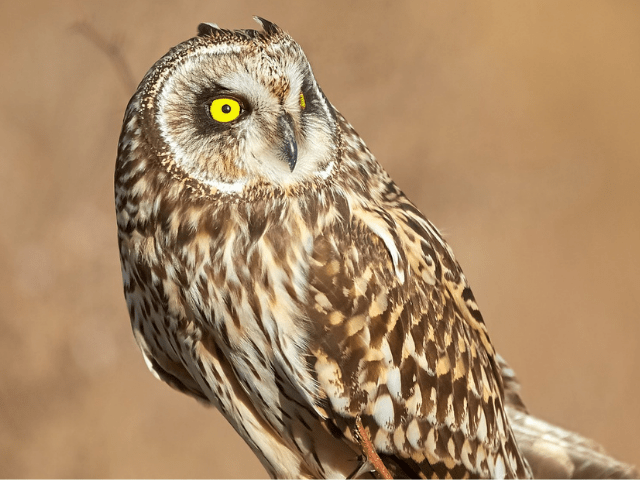
Measurements
- Length: 13.4 to 16.9 inches
- Wingspan: 33.5 to 40.5 inches
- Weight: 206 to 475 grams
The short-eared owl is a medium to large-sized owl with a mottled sandy-brown plumage. It has short ear tufts, as its name implies that it only raises when it is alarmed.
They are rare winter visitors to Texas, mostly settling in the northern part of the state.
Only burrowing owls hunt mainly during the day as much as they do.
Favored hunting grounds are grasslands, prairies, airports, and marshes. Some confirmed locations where short-eared owls have been spotted in Texas are the Katy Prairie Conservancy Properties and Attwater Wildlife Refuge.
A useful tip would be to look for them in an area where northern harriers also hunt.
Frequently Asked Questions About Texas Owls?
Is It Legal To Kill Owls In Texas?
No, it is illegal under state and federal laws to kill an owl in Texas. You could be charged with a misdemeanor if you kill, trap, cage, or poison any owl, even if it's threatening your livestock. Finding and keeping a dead owl is even considered illegal as well as moving a nest or the eggs in it.
Which Places In Texas Can You Find Owls?
You can find owls all over Texas if you're observant. They occupy forests, swamps, canyons, deserts, and even cities and parks. National and state parks across the state like the Big Bend and Guadalupe National parks are hot owl destinations.
Can I Keep An Owl As A Pet In Texas?
No. Only licensed raptor rehabilitators or falconers can keep an owl a pet in Texas. To acquire a license, you also have to go through a series of training. Plus, you'd need to possess a suitable home for the bird.
Starting off as a falconer who can handle owls, you'd spend roughly $2,000.
Wrapping Up
Wherever you live in Texas, you’ll be privileged to see a handful of owls. The largest of them, great horned owl, is likely close to you.
All you have to do is be more observant in your neighborhood. Or take a hiking trip in a park and lend an ear to the many bird songs. Surely, you’d pick up the hoot, squeak, or bark of an owl, even during the day.
How many Texas owls have you spotted so far?

